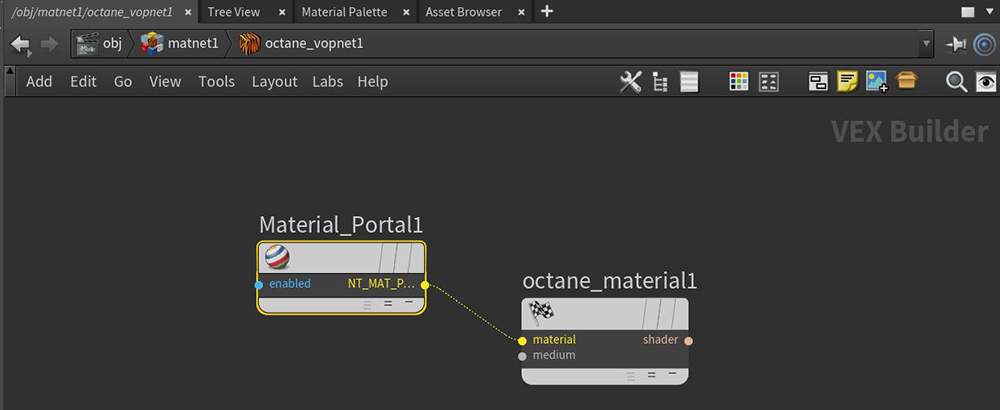
Portals help the render kernel find important light sources. In interior renderings with windows, it is difficult for the path tracer to find light from the outside environment and render the scene. Portals are planes that are added to the scene with the PortalA technique that assists the render kernel with exterior light sources that illuminate interiors. In interior renderings with windows, it is difficult for the path tracer to find light from the outside environment and optimally render the scene. Portals are planes that are added to the scene with the Portal material applied to them. material applied to them.
You can create a Portal material in an Octane VOP network. The Portal material does not have any particular options available to control its functionality (Figure 1).

Figure 1: The Octane Portal material
When using Portals, all opening must be covered with a portal. It will not work if only one window has a portal over it when all other windows do not have a portal over them.
The normals on the Portal object must point into the scene, or the render kernel will not use it properly.
You can't place Portals in openings that are not open, like a window that contains glass geometry.
It is best to try to use the least amount of geometry for Portals - a few simple rectangular planes are best. The more geometry your Portals contain, the more the engine slows down.
Sometimes it is better to place one large Portal over many small windows. It’s okay to make a Portal larger than the opening, just make sure it closes or covers all openings. A Portal that is too large ends up slowing down the efficiency, as some of the rays through the covered parts of the Portal will not go outside the space.
Objects with the Portal material applied will not be visible in the rendering as geometry.
Note: Use the Portal material with the Pathtracing and PMC kernels, not Direct Lighting.
The left image in Figure 2 shows a scene with a portal over a small window lighting a room with glass sphere. The right image is the same scene without a portal material applied. There is a bit more noise in the image on the right. Portal results are usually very subtle and the advantage of using portals becomes more apparent the smaller the opening or window size .

Figure 2: A comparison rendering of a scene with and without a Portal material